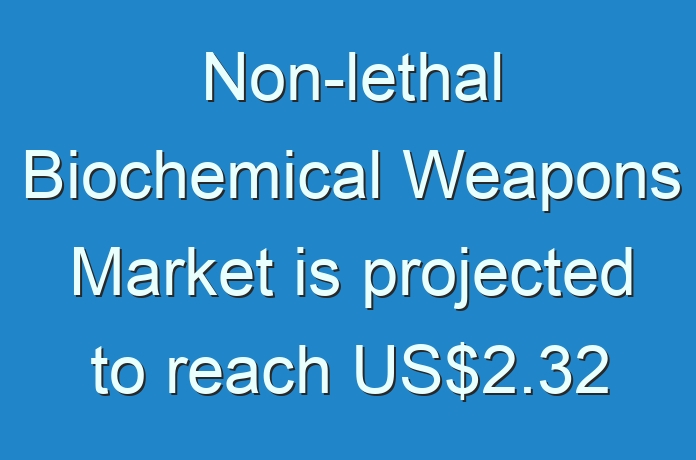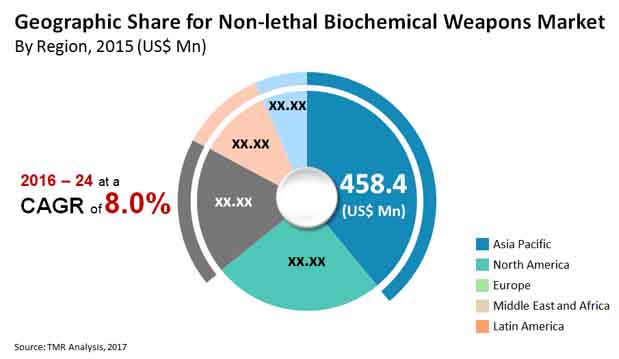
The rising occurrence of political unrest and armed violence has compelled governments to look for methods of countering boisterous crowd but without causing injuries. Because non-lethal biochemical weapons optimize the risk of unintended or incidental casualties, there use in dispersing crowd in policing situations has increased. The global non-lethal biochemical weapons market will therefore witness lucrative opportunities in regions exhibiting a high defense expenditure. For instance, the demand for non-lethal biochemical weapons is high in India, South Korea, China, and Turkey is considerably high as these countries showcase a high budget allocation to the defense sector. Besides the market is also expected to gain from the increasing research and development in this sector.
On the downside, stringent regulations, opposition from human rights association, and the declining budget allocation for the defense sector in developed economies will pose threat to the market. Nevertheless, Transparency Market Research (TMR) forecasts the global non-lethal biochemical weapons market to exhibit a CAGR of 8% between 2016 and 2024. At this pace, the market is projected to reach US$2.32 bn by the end of 2024, from a valuation of US$1.17 bn in 2015.

Middle East and Africa Exhibit Strongest Demand for Non-lethal Biochemical Weapons
Asia Pacific, Europe, North America, Latin America, and the Middle-east and Africa constitute the key regional segments in the global non-lethal biochemical weapons market. Among these regions, the demand witnessed in the Middle East and Africa is the highest. The region held a dominant share of 35% in the overall market in 2015, trailed by North America. This trend is forecast to remain constant through the course of the forecast period, during which Asia Pacific will also emerge as a lucrative market.
The rising allocation to the defense budget and the use of innovative weaponry to counter policing situations are expected to bolster opportunities the non-lethal biochemical weapons manufacturers in Asia Pacific. The demand from the military forces segment is forecast to be the highest in the region. Besides this, the demand for directed energy variant of non-lethal biochemical weapons will be considerably high in North America.
Ask for brochure:
https://www.transparencymarketresearch.com/sample/sample.php?flag=B&rep_id=20858
Military Forces to Remain Dominant End-use Segment
Based on end-use, the global non-lethal biochemical weapons market can be bifurcated into law-enforcement agencies and military forces. Among these, the demand witnessed in the latter segment is the highest. As per TMR, the military forces segment accounted for over 82% of the overall market in 2015 and is expected to remain dominant through the course of the forecast period. The rising use of non-lethal biochemical weapons by military forces is ascribable to the increasing need for crowd control across emerging nations. In addition, these weapons offer advanced methods of countering challenges to internal security. This is a crucial factor driving the demand for non-lethal biochemical weapons in countries such as India, Brazil, Ukraine, and Israel.
Some of the key players operating in the global non-lethal biochemical weapons market are Lamperd Less Lethal (Canada), BAE Systems, Inc. (United Kingdom), QinetiqGroup, Inc. (United Kingdom), General Dynamics Corporation (United States), TASER International,Inc. (Arizona), Moog, Inc. (New York), Raytheon Company (United States), Chemring Group PLC. (United Kingdom), Textron Systems, Corp. (United States), and LRAD Corporation (United States).





